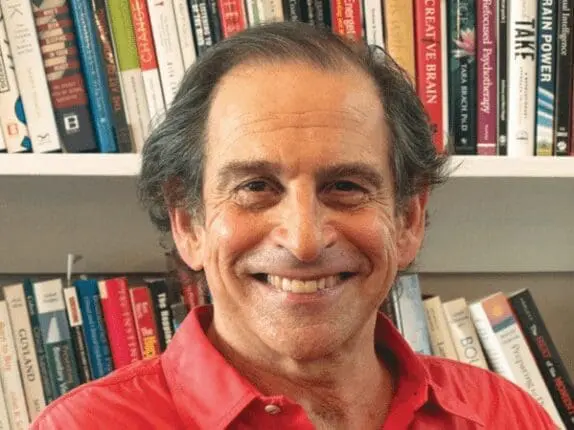I first became aware that there was such a thing as meditation as part of my immersion in the cascade of mind-body-spirit esoterica unleashed by the human potential movement back in the early ’70s. The term mindfulness hadn’t even come into popular usage back then, and, if it had, such an airy-fairy, woo-woo state of being wouldn’t have had any place in the staid psychology program where I got my grad-school training. In my department, you certainly didn’t mention your experiences of altered consciousness—however derived—to your professors, not if you wanted to be taken seriously as a student of psychology hoping someday to get a serious job in a serious profession.
At some point, of course, all of this began to change. As early as 1979, Jon Kabat-Zinn began showing the world that meditation practices could be entirely separated from any suspect spirituality: patients could get the stress- and pain-reducing benefits without shaving their heads and donning saffron robes. And he backed up his methodology with unimpeachable scientific evidence. By the early ’90s, Marsha Linehan brought mindfulness practices from Zen Buddhism to her pioneering work with that most difficult of clinical populations—people with borderline personality disorder. The Cognitive-Behavioral Therapy community began adding mindfulness practices to their work and found it could have a dramatic impact on the relapse rates among depression sufferers. By the early years of the 21st century, the news was out, and mindfulness practice was definitely becoming the “in” thing among the leading lights of the therapy world.
Today, as we know, mindfulness hasn’t simply achieved respectability in the field—it’s everywhere. It sometimes seems you can’t read a journal article, attend a workshop, or go to a conference that doesn’t have “mindfulness” somewhere in the title. In fact, today the problem may be that the mindfulness movement, if it may be called that, has achieved too much acceptance, too much legitimacy, too much applause—even acquired a kind of secular sanctity. When something becomes a sacred cow, it’s immune to fresh observation, examination, criticism, or real understanding.
This issue raises a range of provocative questions about the role of mindfulness methods in therapeutic practice today. Perhaps the most intriguing is whether the direction of influence continues to be from the Eastern practice of meditation to the Western study of psychology—with the wise and ancient East informing and teaching the callow, Johnny-come-lately West—or whether the stimulus has begun to run in the other direction. Another is the degree to which the cultural contexts of both traditions—individual identity and personal fulfillment versus hierarchy and strong attachment to the past—have influenced each other.
A few of the iconoclastic takes on mindfulness practice in this issue—for instance, the question of whether mindfulness really is nothing more than a mystified version of self-hypnosis—may strike some as a kind of heresy. Others may remain skeptical about how the gauzy language of spiritual practice can be adapted to the mundane business of behavioral change. But we hope this issue sparks a timely conversation about the strengths and limitations of both psychotherapy and mindfulness, as well as a discussion of the desirability of forging a truly transcultural wisdom tradition that blends the two taking root in, of all places, the consulting rooms of therapists around the world.
Rich Simon
Richard Simon, PhD, founded Psychotherapy Networker and served as the editor for more than 40 years. He received every major magazine industry honor, including the National Magazine Award. Rich passed away November 2020, and we honor his memory and contributions to the field every day.













